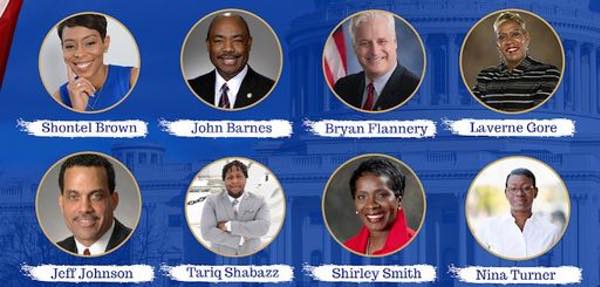
One of the concrete accomplishments of the ’60s civil rights movement was the creation of Ohio’s majority black 21st Congressional District. There was a universal feeling in the country at the time that blacks were underrepresented in Congress. As a result, when the new congressional lines were drawn for the state of Ohio, Clevelanders and blacks in surrounding suburbs elected Lou Stokes in 1968 — the first black person from Ohio to go to Congress from a district that was close to 75% black. Even after the district morphed into the 11th Congressional District as a result of the 1990 census, there still were a majority of black voters.
After Stokes retired in 1998, Cuyahoga County Prosecutor Stephanie Tubbs Jones was elected to the seat and held it until her untimely death in 2008. Her Chief of Staff Marcia Fudge replaced her and easily won reelection over the years despite the district steadily declining in minority domination. Today, the district is 52% black. Remember that number.
With the first rumors of a move by Fudge to become Secretary of Housing and Urban Development in the Biden Administration, the horse race to take her place in Congress began. But results may not turn out like they seem when the horses were at the gate. When they cross the finish line, sometimes a dark horse has emerged from the pack. The end result could be a district represented by someone other than a person of color.
The situation is this: The August 3rd election to replace Fudge is a party primary. The Democrats will nominate one person and so will the Republicans. Which means the highest vote getter on each ticket will face off in a general election. All a candidate needs to win is one more vote than anyone else on the ticket — a plurality not a majority. And the winner of the Democratic primary is almost sure to prevail in the general election.
With so many black candidates in the race: Shontel Brown, Nina Turner, Jeff Johnson, John Barnes Jr., Shirley Smith (and rumor has it that State Representative Emilia Sykes of Akron is strongly considering throwing her hat into the ring) and at least one or two lesser-known black candidates emerging, the black vote just might be splintered so badly that former State Rep. Bryan Flannery of Lakewood (a decent guy who now resides in the district) could emerge victorious. All he needs is a solid white voter turnout from the close to 40% of white voters in the district to overcome a splintered vote in the black community. Also, couple that fact with the likelihood there will be a stronger vote in the white areas of the district, since blacks are traditionally less likely to vote in a party primary.
If the black community wants to maintain the victories of the 1960s to the present and keep a black person in Congress, the black candidates need to sit down together and draw straws if necessary to select and coalesce behind one candidate. But, knowing Cleveland and the egos of politicians as I do, the odds of this occurring are slim to none, and Slim left town.
